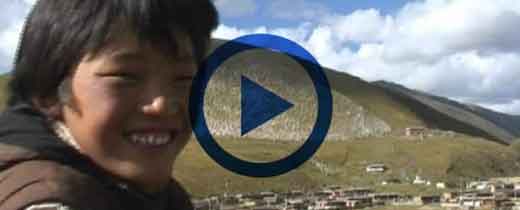Dulan County, also known as “Panchen Zhingde County”, means “Warm” in Mongolian language;
Dulan has a long history. There are more than a thousand ancient tombs and ancient ruins on 200-kilometer long distance from Xiariha in east to Nuomohong in west.
As of 2013, 130 kinds of silk products were unearthed from Tubo tombs, as well as lacquerware, gold and silverware that were made in Central Plains of Han Dynasty, and ancient Roman gold coins, Persian silver coins and gold and silverware from West Asia and Central Asia, stained glass beads and copper perfume Bottles, etc. These cultural relics have proved Dulan’s role on ancient silk road that connected China and Europe. The rare shell beams and sea shrimp mountains confirm geographical changes of sea and Qaidam Basin hundreds of millions of years ago
Location
Dulan County is located in southeast of Qaidam Basin, in middle of Qinghai Province, about 205 kilometers from Delingha City, and 428 kilometers from Xining city.
It borders Ulan County to east, Golmud City to west, Madoi County and Qumarleb County to south, and Delingha City to north. Dulan county is about 310 kilometers long from east to west, 180 kilometers wide from north to south, with a total area of 45,270 square kilometers.
Best time to travel
From June to October
Local climate
Plateau dry continental climate
Most popular sites
Shell beam, the first beam of Chinese sea shrimp and mussel shells, the spectacular shell beam is a 3 km long beam made of shells and sand stains, with a bottom width of 70 meters, a top width of 30 meters and a height of 5 to 10 meters. It was formed by accumulation of many shells at bottom of basin when sea became a continent thousands of years ago.
Panchen Zhingde monastery It was built by Sixth Panchen Lama in 44th year of Qianlong of Qing Dynasty (AD 1779) and is located in Gobi Oasis. It has always been to receive Panchen Lama and other upper-class religious people to live when they travel to or from Tibet. The 9th and 10th Panchen Lama had lived here.
Qaidam River Basin Wetlands starting from Xiaochaidan area in Xiangride Township in east, passing through Balong Township, Zongjia Township, and reaching Nuomuhong Township in west, with range of Qaidam River, Harawusu and Suringol River , Mongol River, Tianger River, Hobson Lake in north and south and surrounding wetlands. There are limestones, red ducks, black-necked cranes, white swans, red-headed pochard, red-nosed ducks, bullhead shrike, and black-browed reeds in wet areas. There are more than 30 species of wetland dependent birds such as warbler.
Reshui ancient tomb groups There are more than 2,000 large and small tombs in Reshui ancient Tombs groups. The unearthed cultural relics are very rich, among which brocade socks and silk fabrics are extremely precious. They were one of ten major archeological discoveries in China in 1996. Xuewei No. 1 tomb is located on platform of alluvial fan on northern bank of Chahan Wusu River. It is regareded as one of the top ten ancient tombs in China. It has been listed as a national key cultural relics protection unit
Geography and climate
Dulan County is located in southeastern part of Qaidam Basin, and its terrain slopes from southeast to northwest. The whole territory can be divided into two types of landforms: Hanbuda Mountain and Qaidam Basin Plain. Topography of Gobi, desert, valley, river and lake, hills, plateau, and mountain are distributed in sequence. There are more than 40 large and small rivers such as Shaliu River, Toso River and Chahanwusu River in territory.
It has a plateau dry continental climate, with an average annual temperature of 2.7°C, the lowest extreme temperature of -29.8°C, and the highest extreme temperature of 33°C. The average annual precipitation is 179.1 mm. The western part of county is arid and drier, with sufficient sunshine, and the eastern part has a cool climate with large temperature difference between day and night. The annual average temperature is 1.4-5.1℃, and the annual sunshine hours are 2903.9-3252.5 hours.
Population and ethnic groups
As of 2013, Dulan County has a total population of nearly 100,000 people, consisting of 19 ethnic groups including Mongolian, Tibetan, Han, Hui, Tu, and Salar.
Brief history
From Qin Dynasty to beginning of Han Dynasty, Dulan belonged to white orchid and Qiang pasture of Xiqiang.
In 4th year of Emperor Wen of Han Dynasty (AD 4), Dulan was under jurisdiction of Han Dynasty.
From 4th to 7th century, it was a territory of Tuyuhun Dynasty, which was later annexed by Tubo kingdom.
From 13th century (Yuan Dynasty), Dulan was grazing land of East Mongolia tribes.
In 6th year of Republic of China (1917), Dulan area was under jurisdiction of Gansu Province.
In 19th year of Republic of China (1930), it was changed to Dulan County.
In 1952, Dulan Autonomous Region was reorganized.
In 1955, it was changed to Dulan County




